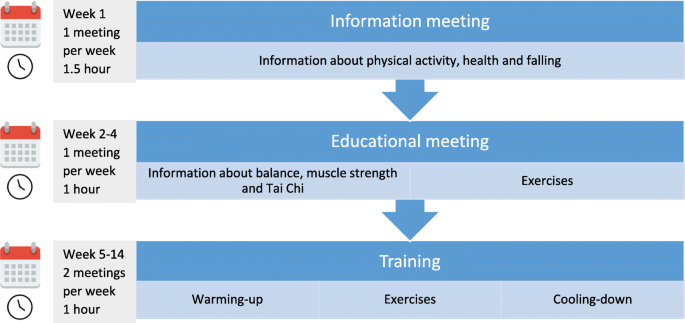The 3-Minute Rule for Dementia Fall Risk
The 3-Minute Rule for Dementia Fall Risk
Blog Article
Examine This Report about Dementia Fall Risk
Table of ContentsThe Definitive Guide for Dementia Fall RiskThe Dementia Fall Risk IdeasUnknown Facts About Dementia Fall RiskA Biased View of Dementia Fall Risk
A loss danger assessment checks to see just how most likely it is that you will certainly drop. It is primarily provided for older grownups. The assessment usually consists of: This consists of a series of concerns concerning your general health and if you have actually had previous drops or issues with equilibrium, standing, and/or strolling. These tools evaluate your strength, balance, and stride (the way you stroll).STEADI consists of testing, examining, and treatment. Interventions are referrals that may decrease your threat of falling. STEADI includes three actions: you for your threat of succumbing to your threat factors that can be improved to try to stop falls (as an example, balance problems, impaired vision) to minimize your danger of falling by making use of effective strategies (for instance, providing education and learning and resources), you may be asked numerous inquiries consisting of: Have you dropped in the previous year? Do you really feel unstable when standing or strolling? Are you fretted about falling?, your service provider will evaluate your strength, equilibrium, and gait, utilizing the complying with fall evaluation tools: This examination checks your gait.
After that you'll take a seat once more. Your provider will certainly examine how much time it takes you to do this. If it takes you 12 secs or more, it may imply you go to higher danger for an autumn. This test checks toughness and balance. You'll being in a chair with your arms went across over your breast.
Relocate one foot midway forward, so the instep is touching the big toe of your various other foot. Move one foot fully in front of the other, so the toes are touching the heel of your other foot.
What Does Dementia Fall Risk Mean?
A lot of drops take place as a result of numerous adding variables; therefore, handling the threat of falling begins with determining the aspects that add to fall threat - Dementia Fall Risk. Several of one of the most relevant threat aspects consist of: History of prior fallsChronic clinical conditionsAcute illnessImpaired stride and equilibrium, lower extremity weaknessCognitive impairmentChanges in visionCertain risky medications and polypharmacyEnvironmental variables can likewise boost the danger for drops, including: Insufficient lightingUneven or damaged flooringWet or slippery floorsMissing or damaged handrails and get hold of barsDamaged or improperly equipped devices, such as beds, mobility devices, or walkersImproper use assistive devicesInadequate supervision of individuals living in the NF, including those that exhibit hostile behaviorsA effective autumn risk management program needs an extensive clinical analysis, with input from all members of the interdisciplinary team

The care plan need to additionally include treatments that are system-based, such as those that advertise a safe environment (suitable lighting, handrails, order bars, and so on). The performance of the interventions must be examined occasionally, and the care strategy changed as essential to reflect modifications in the fall threat evaluation. Implementing a fall risk management system utilizing evidence-based finest practice can decrease the frequency of falls in the NF, while limiting the capacity for fall-related injuries.
The Only Guide for Dementia Fall Risk
The AGS/BGS standard advises evaluating all adults matured 65 years and older for autumn risk yearly. This screening is composed of asking clients whether they have actually dropped 2 or even more times in the past year or sought medical focus for a fall, or, if they have not dropped, whether they feel unsteady when walking.
Individuals that have fallen when without injury needs to have their equilibrium and site link stride assessed; those with stride or balance problems need to get additional assessment. A history of 1 fall without injury and without stride or equilibrium problems does not necessitate further analysis past continued yearly autumn risk testing. Dementia Fall Risk. An autumn threat analysis is required as part of the Welcome to Medicare examination

Indicators on Dementia Fall Risk You Need To Know
Recording a falls history is among the top quality indicators for autumn avoidance and monitoring. An essential component of danger evaluation is a medicine review. Several classes of medicines increase fall danger (Table 2). Psychoactive drugs specifically are independent forecasters of falls. These medicines often tend to be sedating, modify the sensorium, and harm balance and stride.
Postural hypotension can frequently be eased by minimizing the dose of blood pressurelowering medications and/or stopping drugs that have orthostatic hypotension as an adverse effects. Use above-the-knee assistance hose and resting with the head of the bed elevated might also decrease postural decreases in blood stress. The advisable elements of a fall-focused health examination are received Box 1.

A Yank time better than or equal to 12 secs recommends high fall risk. Being unable to stand up from a chair of knee elevation without using one's arms suggests raised autumn threat.
Report this page